Blog Posts Tagged AC/DC Module
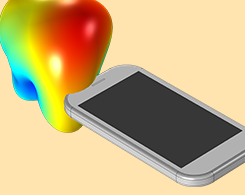
Computational Electromagnetics Modeling: Which Module to Use?
If you work with a particular electromagnetic device or application area, you might be wondering which module in the COMSOL product suite is right for you. Keep reading for a comprehensive intro.
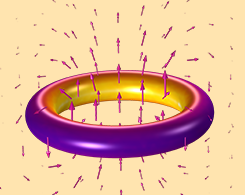
Course: Modeling Electromagnetic Coils in COMSOL®
Get an overview of our Learning Center course on modeling coils using COMSOL Multiphysics and the AC/DC Module, from setting up a coil model to analyzing electromagnetic heating and more.
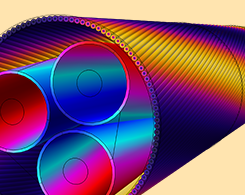
Using 3D Models to Investigate Inductive Effects in a Submarine Cable
It takes a modern desktop computer ~30 minutes to compute a 3D cable model with twisted magnetic armor. Consequently, 3D cable models are replacing empirical models in the power cable industry.
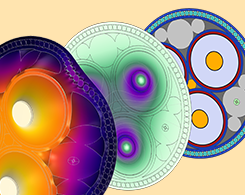
Modeling Cables in COMSOL Multiphysics®: 8-Part Tutorial Series
Your roadmap to modeling cables with the AC/DC Module and COMSOL Multiphysics®: An 8-part tutorial series that starts with the basics and gradually adds complexity and multiple physics.
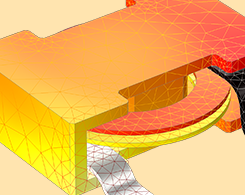
How Do I Use Gauge Fixing in COMSOL Multiphysics®?
Here’s your guide to using gauge fixing in your electromagnetics simulations in COMSOL Multiphysics®, from determining if it is necessary to imposing current conservation.
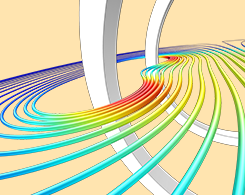
What Is Gauge Fixing? A Theoretical Introduction
Investigate the consequences of Helmholtz’s theorem when applied to Maxwell’s equations, and when using scalar and vector potentials to represent physical fields.
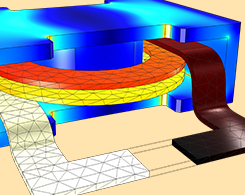
Which Study Type Should I Use for My Electrothermal Analysis?
What’s the best interface to use when implementing electrothermal analyses in COMSOL Multiphysics? We go over the interfaces, study types, and multiphysics couplings for high and low frequencies.
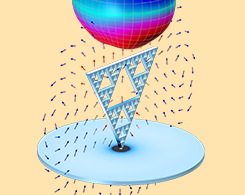
What Is the Curl Element (and Why Is It Used)?
When solving some electromagnetics problems, the curl element (also called the edge element or vector element) can be used in the finite element method.
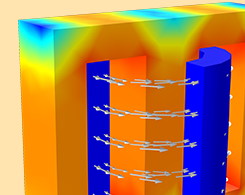
How the B-H Curve Affects a Magnetic Analysis (and How to Improve It)
Magnetic soft iron steels are widely used as core materials in motors, transformers, and inductors. The B-H curve is used to describe the magnetization properties of such materials.
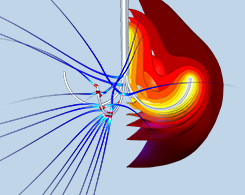
Heat Transfer in Biological Tissue with Thermal Damage Analysis
Hepatic tumor ablation using radiofrequency heating, microwave coagulation therapy, and other cancer treatments can be studied by modeling the electromagnetic heating of biological tissues.

10 Real Uses of COMSOL Multiphysics® in the Power Industry
Minimizing transformer noise, planning underground cable networks, and managing a power grid. Keep reading for more real-world examples in which simulation is used in the power industry.
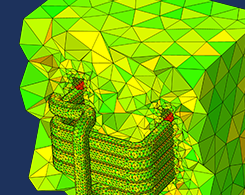
Best Practices for Meshing Domains with Different Size Settings
Tip 1: Choose the order of your meshing sequence operations. Tip 2: Use a single operation to mesh multiple domains. Keep reading to learn how to ensure the high-quality meshing of model domains.
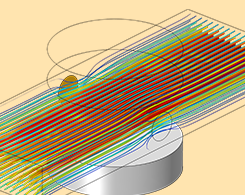
Building a Magnetohydrodynamic Multiphysics Model in COMSOL®
Magnetohydrodynamic models call for fluid dynamics and electromagnetics couplings. To do so, you can set up bidirectional couplings between all physics equations or building a simplified model.

Speeding Up DNA Separation in a Microchannel via Simulation
DNA separation takes a long time using traditional methods. Now, researchers from the Missouri University of Science and Technology have found a faster way to get the job done.

Defying Gravity with a Realistic Acoustic Levitator Model
It’s not just science fiction: Objects really can levitate. 1 way this is possible is by using sound waves to lift and suspend particles midair. Simulation can broaden the use of this technology.
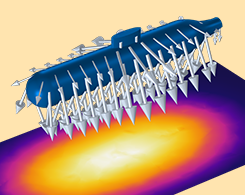
Reducing the Magnetic Signature of a Submarine
For a submarine to avoid detection and remain “under the radar”, engineers need to investigate the magnetic signature of the vessel’s design. Electromagnetics simulation is up to the task.
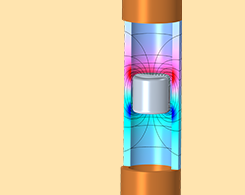
How Eddy Current Braking Technology Is Freeing Us from Friction
What moves must eventually stop. Unlike mechanical brakes, eddy current braking systems prevent damage when braking at high speeds. Hop on and learn more about eddy currents in this blog post.
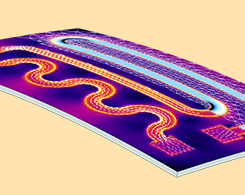
Designing Heating Circuits with Multiphysics Simulation
The electronic message boards you see on the highway contain heating circuits. Their design is a truly multiphysics problem involving heat transfer, structural mechanics, and electromagnetics.

Keynote Video: Optimizing Cable Systems via Simulation
The length of cable for a mode of transportation depends on the amount of passengers, so a car uses ~5 km of cable and a cruise ship uses ~5000 km. Learn more about cable system design here.
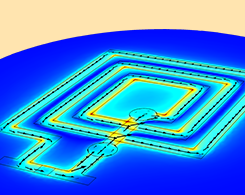
Optimizing Planar Coils for PCBs with Electromagnetics Simulation
Planar coils are found in the PCBs of blood pressure sensors, RFID tags, induction cooktops, and more. Use layered shell technology to design optimized planar PCB coils, no matter the use case.

Keynote Video: Designing Lightning Protection Systems with Simulation
Can lightning strike the same place twice? Either way, it is challenging to model. When designing lightning protection systems, NTS Lightning Technologies turned to multiphysics simulation.

Keynote Video: Designing Improved Heart Pumps with Simulation
Abbott Laboratories designed “the most complex machine ever implanted into a human being” — an LVAD for heart failure patients — using multiphysics modeling. The result? Saved lives.
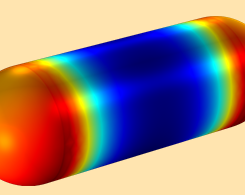
Validating the Use of Boundary Elements for Magnetostatics Modeling
To validate the boundary element method (BEM) as a viable alternative to FEM for magnetostatics modeling, you can try a 3-part tutorial series of electromagnetic force calculations.
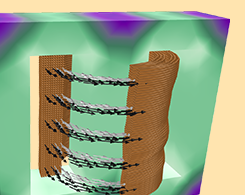
Evaluating Transformer Designs with Electromagnetics Simulation
Transformers are used to increase, decrease, and isolate voltage in many different types of devices. EM simulation can be used to evaluate a transformer design, no matter its purpose.
